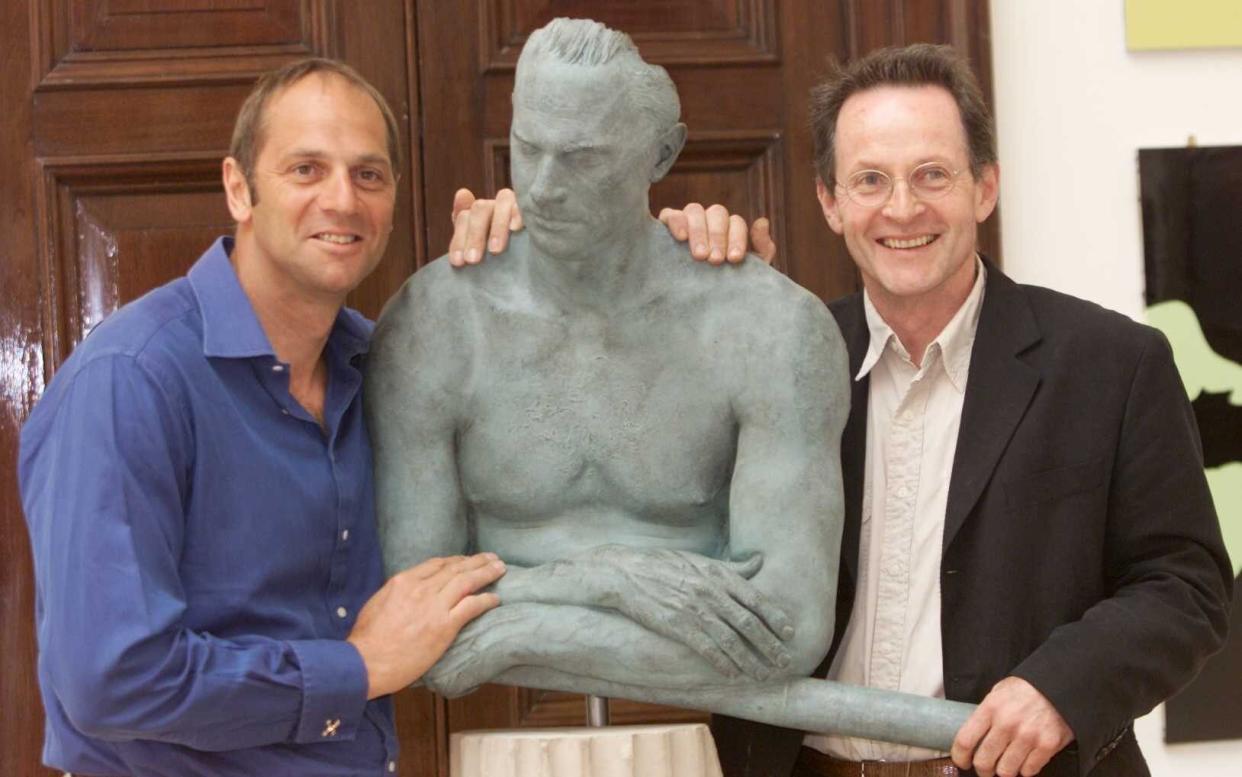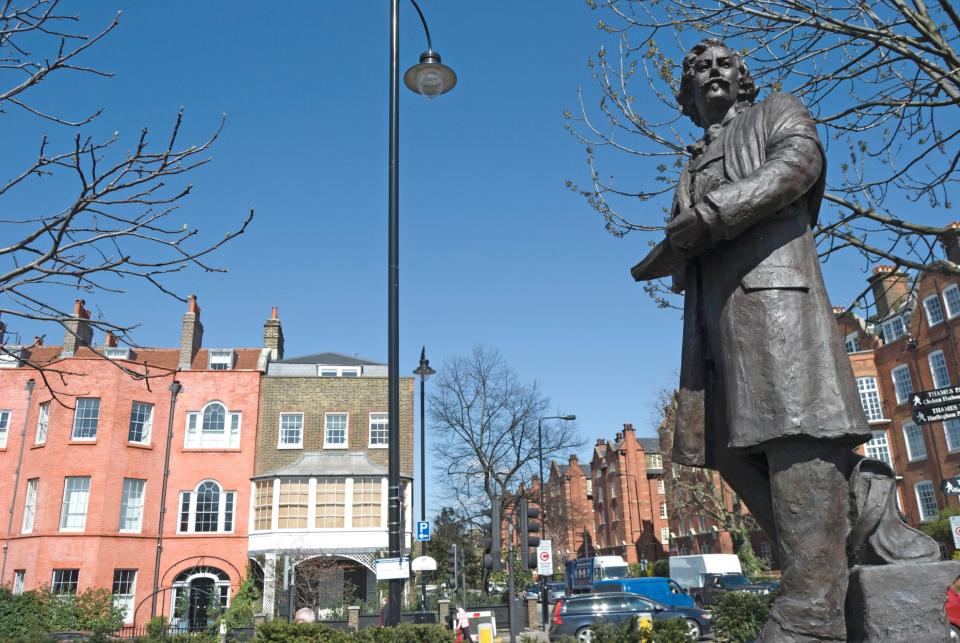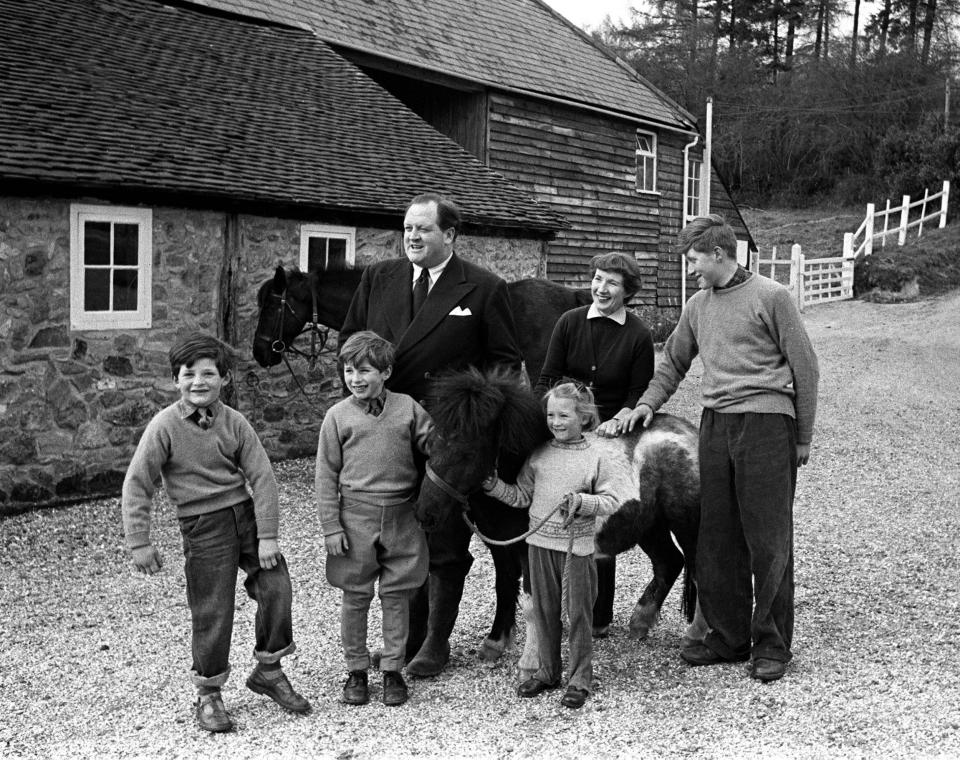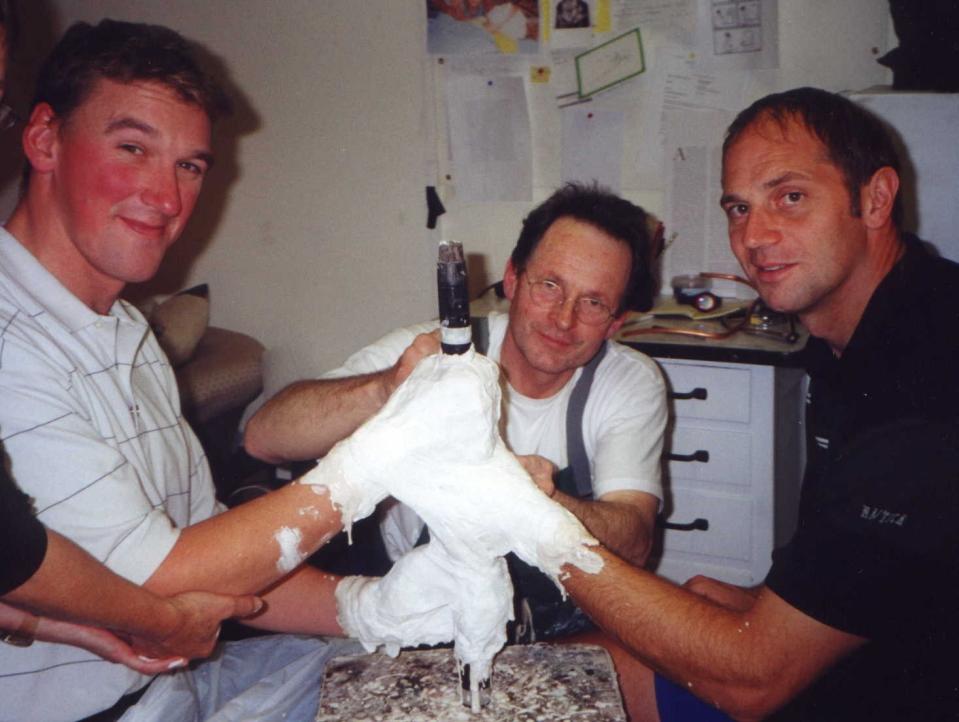Nicholas Dimbleby, scion of the broadcasting dynasty who made his name as a sculptor – obituary

- Oops!Something went wrong.Please try again later.
- Oops!Something went wrong.Please try again later.
Nicholas Dimbleby, who has died aged 77 of Motor Neurone Disease (MND), was once described in the Daily Telegraph as “the sculpture wing of the Dimbleby dynasty”.
The youngest of the three sons of the celebrated BBC broadcaster Richard Dimbleby, Nicholas chose not to follow in his father’s footsteps, admitting that he found performing in public “nerve-wracking”, leaving his older brothers, David and Jonathan, to maintain the family tradition.
But he found recognition in his own right, winning acclaim for figurative bronzes such as his statue of James McNeill Whistler, sketchbook in hand, that stands on Cheyne Walk by Battersea Bridge, his Jimmy Hill at Coventry City FC, and his portrayal in bronze of a youthful Captain James Cook in Great Ayton, North Yorkshire.

On his website Nicholas Dimbleby wrote: “William Blake wrote of the ‘human form divine’ ... It has always been my aim to recreate in clay and bronze some of that ‘divine’ essence... At best there is my ‘Pygmalion’ moment when the work almost comes alive. This does not depend on some ideal form or a slavish copying of the model, but rather the sculptor’s ability to conjure energy from the grey mud. Whatever the demands of my brief, this is my underlying task.”
It was the life that he breathed into his creations – and their emotional truth – that struck reviewers. His “Leaving”, the war memorial unveiled at the front of Cranleigh School in 2015, was described in The Good Schools Guide as “the most moving war memorial ever seen in a school”. His last work, a life-size figure of Samuel Taylor Coleridge unveiled in 2022 outside the parish church in Ottery St Mary, Devon, captured a youthful poet as if he was on a country walk, notebook and pen in hand.
But a few months after the unveiling, Nicholas Dimbleby experienced the first symptoms of MND, and towards the end of last year BBC Radio 4 broadcast The Bright Side of Life, a two-part series of conversations recorded at Nicholas’s home, in which he talked to his brother Jonathan about living with MND, discussed whether there is an afterlife and whether there should be a right to die, and reflected on the consolation he found in creativity.
“Last Christmas, before his diagnosis,” wrote the Telegraph’s reviewer Charlotte Runcie, “Nicholas cooked the lunch for 17 Dimblebys and was right in the heart of the ‘boisterous’ conversation. But by February he was falling over in the street, his muscles flickering under his skin like a lightbulb about to cut out. By May his voice was deserting him. In the summer, he could no longer eat without choking... I listened in floods of tears, and you probably will, too. But you’ll never forget it.”
On January 25 Jonathan Dimbleby gave an interview to the Daily Express, which has joined the campaign to legalise assisted dying. Nicholas, he said “has not an ounce of self-pity but wants readers to know what it is really like. So, writing on a pad he said ‘I can’t speak, I can’t taste, I am fed through a tube into my stomach, I can’t control my bowels, the drugs make it impossible for me to read, I choke, and some days every breath is a terrible effort. If my saying this assists the cause of Dignity In Dying, I am glad to be of use’.”

Nicholas Dimbleby was born on August 8 1946, the third of four children of Richard Dimbleby and his wife Dilys, née Thomas. The Dimbleby children, David, Jonathan, Nicholas and his younger sister Sally, were close as children growing up on a small farm in the Sussex countryside, and they remained close as adults, often holidaying together and enjoying huge gatherings of the extended family. Despite the much-publicised split between David and his first wife Josceline, the cookery writer, Nicholas and his family remained close to both.
In an interview with the Telegraph, Nicholas recalled that his love of art started as a young boy because, being mildly dyslexic (he was later diagnosed with acute astigmatism), one of the things he really enjoyed was making things with his hands. At Cranleigh School, the art room was his “refuge” and he decided to train as a sculptor. His father died of cancer in 1965 when he was 19 and a student at Edinburgh College of Art, bursting, as Nicholas put it, “ the bubble of my luxury life”.
He continued his studies at Goldsmith’s College, London, where he met his wife Kay, a trainee music teacher. They married in 1971 and remained in London while Nicholas worked as an assistant to the abstract sculptor William Pye. Then, craving a quieter life, they moved to France where to help make ends meet they bred rabbits and chickens, grew their own food and did work to the house they were living in as rent.
After a year they returned to Britain and set up home in Devon, where he and brother Jonathan bought a run-down manor house in Clyst Hydon, Nicholas buying out his brother’s share when the family newspaper business, set up by their great-grandfather in 1870, was sold. There they brought up their four children as Nicholas’s reputation as a sculptor grew.
He ranged widely in his work, developing a niche in sporting heroes, his subjects including the likes of Jonny Wilkinson and Steve Redgrave. Life casts he did of his own children as they grew led to private commissions including making a foot cast of the one-year-old Lady Louise Windsor for her parents, Prince Edward and his wife Sophie. He also did several pieces for the King when he was Prince of Wales.

Memorials include one to his father, Richard, which was unveiled at Westminster Abbey in 1990 by the broadcaster’s widow, and a memorial sculpture commissioned by the Royal College of Physicians to honour doctors who died during the Covid pandemic, unveiled by Professor Sir Christopher Whitty in 2022. He also developed a line in playful, whimsical firebacks.
“Big public commissions are few and far between,” Dimbleby said in 2004. “... A lot of the time it’s wondering where the next job is coming from... You can be poor very often because you’re always uncertain where the next work is coming from. But... I look around and see the rest of the world and think I’m so lucky. It’s a great privilege, and great fun.”
He had no regrets about not joining his brothers in the broadcasting business: “I think I’ve found what I am good at. I fear I’d have been the one left reading the local news and that might have made for bitterness!”
MND disease was not the first health crisis Dimbleby’s family had to face. In 1990 his youngest daughter Grace was diagnosed with leukaemia and had to undergo a course of chemotherapy. Kay Dimbleby gave up her teaching job to care for her and established a new career designing textiles and hand-crafted quilts, working alongside her husband in his studio.
Kay survives him with their two sons and two daughters.
Nicholas Dimbleby, born August 8 1946, died February 10 2024

